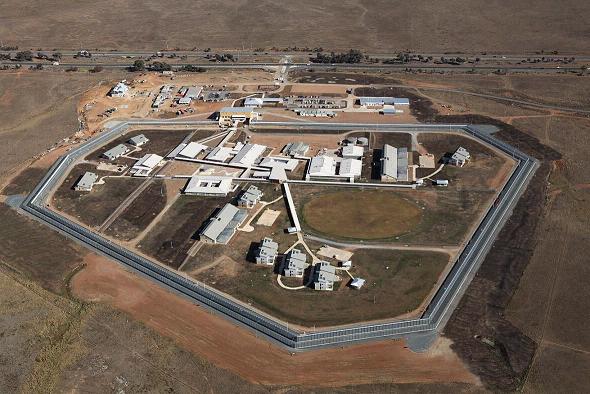
I have written many times on corrective services in relation to rehabilitative and restorative processes, and the lack of them, concerning offenders and victims.
Perhaps it is timely to revisit the Alexander Maconochie Centre (AMC), which may have escaped public notice and attention and may give context to further conversations on the subject of how Canberra deals with the consequences of sentencing by the courts.
The AMC prison project was ambitious. As a small jurisdiction, we have always had a small number of incarcerated offenders compared with other states and territories and this means we have issues with economies of scale.
We needed to either provide a complex system for a complex problem or dissect the categories and farm them out somehow.
Those categories were the three levels of security, low, medium and high; protection (for separation of prisoners for their own safety); cultural mixes; types of crime such as white collar, sexual offences, child sex offence, traffic and nonviolent, crimes against the person; and length of sentence.
We also had to cater for prisoners who were on remand in the categories of remand before appearance and remand for sentence. The complication here is that the prisoner on remand for appearance is actually innocent until proven guilty, yet the prisoner on remand for sentence is guilty but no penalty has yet been imposed and sometimes this can result in a non-custodial sentence and the offender is released on a bond of sorts.
Overlaid on all of these was the gender mix.
The above gives the reader a sense of the complication of the project given the numbers. The numbers in 2004 or so were about 195 male prisoners with 8 female prisoners. Now there are well over 300, but this is still small in comparison to other jurisdictions and smaller still when broken down into component parts.
The AMC project was further complicated by the need to provide rehabilitative and restorative programs for the various groups and also the transitional release programs, the therapeutic programs for current and former drug addicts, and a through-care model for the transition to the community post release, all with the economy of scale challenge.
Most people just saw the prison as a form of accommodation where people went after sentencing, sometimes for a short time and sometimes for a lengthy time. They didn’t understand that we could have people in prison for life, for ten years or for six months.
In fact, the average sentence was between three and six months. This was seen as a challenge because corrective services literature said that effective rehabilitative programs need at least 12 months to be successful.
A further challenge was that it was generally accepted that for successful attitudinal change, men respond one on one whereas women respond in groups. But there was not the critical mass of female prisoners of like security classification to develop a sustainable program for them. This remains a challenge.
Another challenge was the issue of either remand or sentenced prisoners with significant drug withdrawal issues. This needed to be managed sensitively and under appropriate medical supervision. People are in crisis when coming down from a full on drug issue or addiction and behavioural problems accompany that journey.
One interesting development that occurred was the creation of a health centre within the grounds of the prison. It is not part of the corrective services set of programs and run by ACT Health. In this way prisoners are treated as ordinary members of the community and their health is paramount.
This has, I hope, given the reader a short picture of the challenges facing the AMC and corrective services in general. It is not intended to be comprehensive and I can write on each element of the issues indicated above. Indeed, should any reader want further comment, I’d be grateful and happy to respond.
I have noticed that criticism has been levelled at the prison on the basis of overcrowding and recidivism rates. This has been outrageous. Political comment has been laced with convenient popularism.
Most of the prisoners in the AMC have made a mistake or have been under the iron fist of addiction and deserve our help and compassion. They do not deserve ostracism and condemnation.
That should be reserved for habitually violent criminals and paedophiles. These are the minority in the AMC.
The ACT should be proud that we have accepted our community responsibility to look after our own offenders and have brought them home to their families.




















